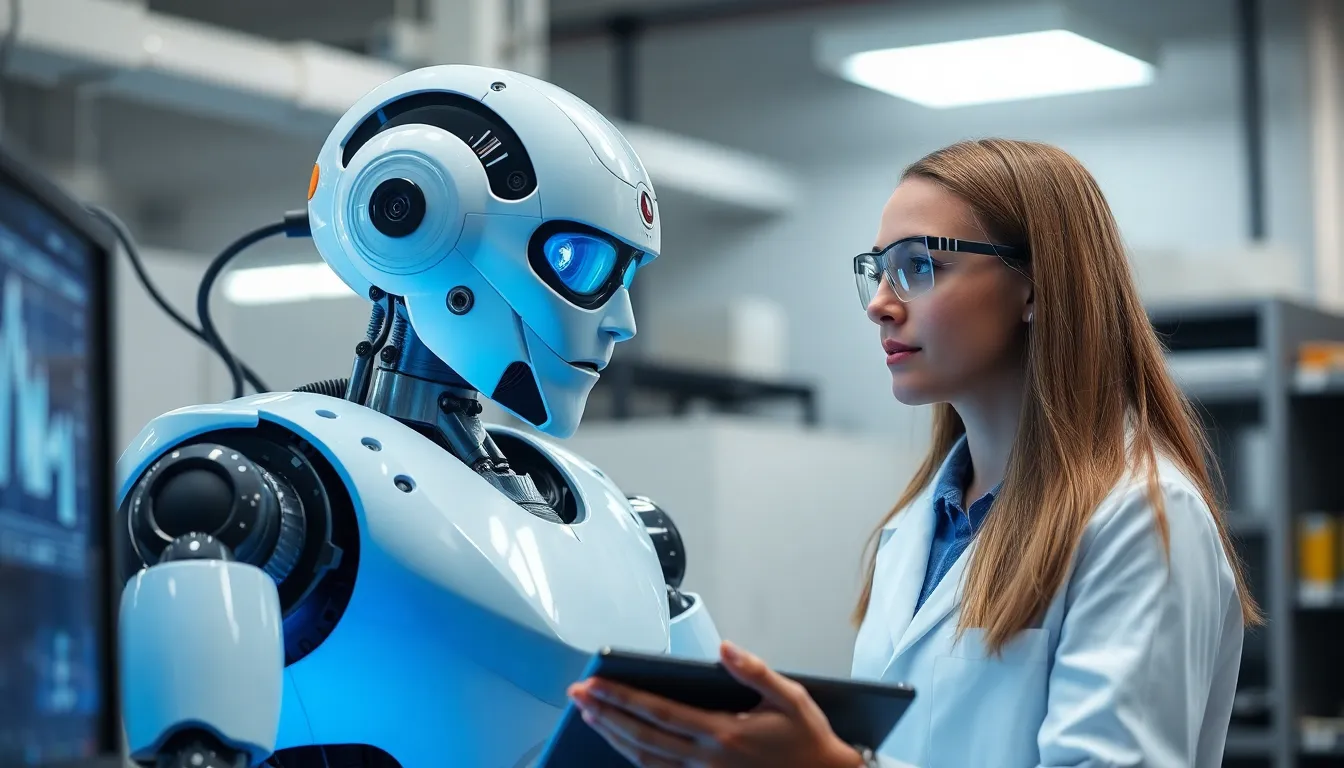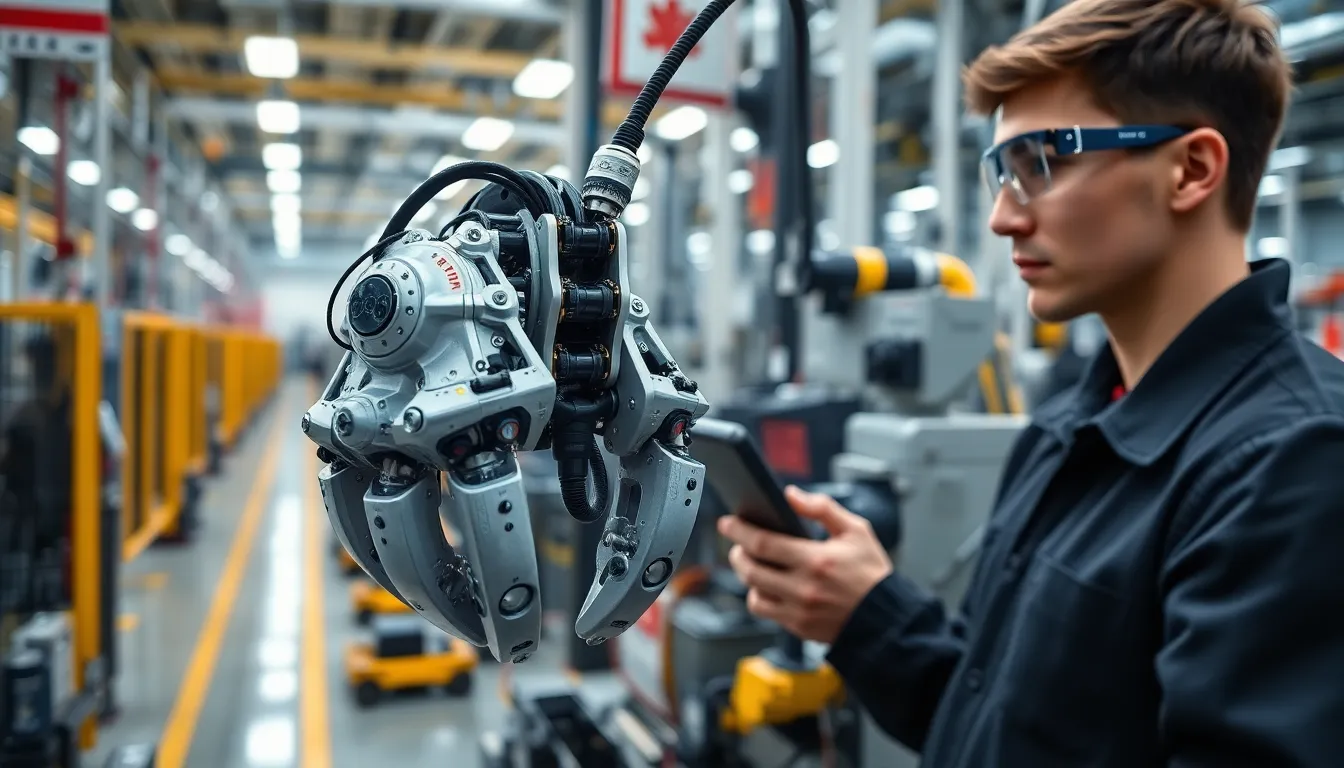In a world where technology evolves at lightning speed, advanced robotics systems are taking center stage. These innovations are not just reshaping industries; they’re transforming everyday life. From manufacturing to healthcare, robotics is enhancing efficiency and precision like never before.
As organizations strive for automation and improved productivity, the demand for sophisticated robotics solutions grows. These systems leverage artificial intelligence and machine learning, allowing them to adapt and learn from their environments. The impact is profound, paving the way for smarter operations and better decision-making.
Exploring the realm of advanced robotics systems reveals a future filled with possibilities, where machines work alongside humans to tackle complex challenges and drive progress.
Table of Contents
ToggleOverview of Advance Robotics Systems
Advanced robotics systems integrate cutting-edge technologies, such as artificial intelligence (AI) and machine learning, to enhance performance across various sectors. These systems can analyze vast data sets, enabling them to make informed decisions in real-time. Industries like manufacturing and healthcare benefit significantly from these innovations through improved efficiency, accuracy, and productivity.
Key Components of Advanced Robotics Systems
- Sensors: Sensors gather environmental data, allowing robots to perceive their surroundings and react appropriately.
- Control Systems: Control systems process information from sensors and determine the robot’s actions, ensuring precision and reliability.
- Actuators: Actuators provide the necessary movement and force, facilitating the robot’s interaction with the environment.
Applications of Advanced Robotics Systems
- Manufacturing: Robots automate assembly lines, handling tasks like welding, painting, and packaging with high speed and precision.
- Healthcare: Robotic systems assist in surgeries, rehabilitation, and patient care, improving outcomes and reducing recovery times.
- Logistics: Automated systems optimize inventory management and streamline supply chain operations, enhancing efficiency.
Future Trends in Advanced Robotics Systems
- Collaborative Robots (Cobots): Cobots work alongside humans, enhancing production capabilities while ensuring safety.
- AI-Powered Automation: AI advancements enable robots to learn and adapt, leading to smarter operations in dynamic environments.
- Miniaturization: Compact robots provide flexibility and versatility, allowing them to perform tasks in constrained environments.
The continuous evolution of advanced robotics systems holds the potential to revolutionize not only industries but also everyday life. These systems promote innovation, drive operational improvements, and foster collaboration between humans and machines.
Key Technologies Driving Advance Robotics Systems

Advanced robotics systems rely on several key technologies that significantly enhance their capabilities and operational effectiveness. Among these, artificial intelligence and machine learning lead the charge, enabling machines to learn from experience and improve their performance over time.
Artificial Intelligence in Robotics
Artificial intelligence (AI) equips robots with the ability to simulate human-like decision-making processes. AI algorithms facilitate tasks such as perception, reasoning, and understanding natural language, making robots more versatile. AI-powered systems leverage computer vision to identify objects, navigate environments, and execute complex tasks with precision. Examples include autonomous vehicles that make real-time driving decisions and robotic surgical systems that assist in intricate medical procedures. This technology enables robots to operate efficiently in unpredictable settings, enhancing their contributions across various industries.
Machine Learning Applications
Machine learning (ML) significantly contributes to the advancement of robotics by enabling systems to adapt based on data inputs. ML algorithms analyze vast datasets, allowing robots to recognize patterns and improve their operational strategies. Applications range from predictive maintenance in manufacturing robots to personalized assistance in healthcare systems. By learning from past experiences, robots equipped with ML capabilities enhance performance over time. For instance, warehouse robots optimize picking routes based on historical data, resulting in increased efficiency. The integration of machine learning fosters continuous improvement, ensuring robots evolve to meet changing demands and environments.
Industrial Applications of Advance Robotics Systems
Advanced robotics systems significantly enhance productivity and precision across multiple industrial sectors. Their versatility and efficiency lead to transformative outcomes, particularly in manufacturing and healthcare.
Manufacturing and Automation
Manufacturing relies heavily on advanced robotics for automation and efficiency. Robots perform tasks such as assembly, welding, and painting with high accuracy. They reduce production time by operating continuously without fatigue. Innovations like collaborative robots (cobots) strengthen human-robot interaction, allowing for safe and efficient co-working environments. According to the International Federation of Robotics, the global robot density in manufacturing reached 113 robots per 10,000 employees in 2020, indicating widespread adoption. Examples of advanced robotics in manufacturing include:
- Automated Guided Vehicles (AGVs) enhance material handling by transporting materials within production facilities.
- Robotic arms execute intricate assembly tasks, minimizing human error while increasing throughput.
- 3D printing robots enable rapid prototyping and customized production.
Healthcare Innovations
Healthcare benefits from advanced robotics through improved surgical precision and patient care. Robots assist in various procedures, providing surgeons with enhanced capabilities. Surgical robots allow for minimally invasive procedures, reducing recovery times and improving patient outcomes. As per a report from MarketsandMarkets, the surgical robots market is projected to reach $24.2 billion by 2025. Key applications of robotics in healthcare include:
- Robotic-assisted surgeries enhance precision in delicate procedures, making them less invasive.
- Rehabilitation robots facilitate physical therapy, offering personalized therapy solutions that improve recovery for patients.
- Telepresence robots enable remote consultations, increasing access to healthcare for patients in rural areas.
Advanced robotics systems present invaluable opportunities for efficiency and efficacy in manufacturing and healthcare. Their adoption contributes significantly to operational excellence, bettering both productivity and patient outcomes.
Challenges in Implementing Advance Robotics Systems
Implementing advanced robotics systems presents various challenges that organizations must address. These challenges encompass technical limitations and ethical considerations that impact the successful deployment of robotics.
Technical Limitations
Technical limitations often hinder the effectiveness of advanced robotics systems. One major constraint involves the complexity of programming. Creating algorithms for robots that effectively handle unpredictable environments remains a significant obstacle. Limited processing power in some robots restricts their ability to analyze vast data sets in real-time.
Another issue concerns sensory perception. Many robots struggle to interpret and react appropriately to complex visual and auditory signals. Inadequate sensor technology can lead to misinterpretation of environmental cues, subsequently affecting performance.
Additionally, integration with existing systems poses challenges. Organizations often rely on legacy systems that may not be compatible with advanced robotics technologies. This mismatch complicates the deployment process and increases costs.
Ethical Considerations
Ethical considerations represent another critical challenge in implementing advanced robotics systems. Concerns about job displacement arise as automation increasingly replaces humans in various tasks. This transition creates tensions in the workforce and necessitates discussions on retraining and workforce adaptation.
Privacy issues also emerge. Advanced robotics systems often collect and process personal data, raising concerns about data protection and individual rights. Organizations must establish robust privacy frameworks to ensure compliance with regulations and protect users.
Moreover, the use of autonomous systems in decision-making raises ethical dilemmas. Decisions made by robots in areas such as healthcare and military applications could lead to significant ethical concerns regarding accountability and responsibility. Organizations must address these dilemmas to build trust and ensure responsible robotics deployment.
Future Trends in Advance Robotics Systems
Future trends in advanced robotics systems indicate substantial advancements and innovations shaping various sectors. Collaborative robots (cobots) are expected to play a prominent role, working alongside human operators to enhance efficiency. Cobots can adapt to dynamic environments, allowing for seamless human-robot interactions and improved task completion.
AI-powered automation marks another key trend. Robotics systems can learn from experience and adapt to changing conditions, enhancing their ability to perform complex tasks over time. This adaptability could lead to widespread adoption in industries requiring real-time decision-making capabilities, such as logistics and supply chain management.
Miniaturization in robotics opens avenues for deployment in constrained environments. Smaller, more agile robots can navigate tight spaces effectively, finding applications in fields like medical procedures and exploration missions.
All of these innovations align with an increasing emphasis on data-driven insights. Advanced robotics systems increasingly utilize big data and analytics to enhance operational performance. Collecting and analyzing data allows systems to optimize processes and improve outcomes, particularly in manufacturing and healthcare settings.
Integration of advanced sensors is poised to enhance interaction between robots and their environments. Improved sensory technology allows robots to perceive surroundings with greater accuracy, enhancing safety and efficiency in collaborative environments.
Furthermore, ethical considerations concerning AI in robotics continue to shape development policies. As robots become integral to decision-making in sensitive areas, robust frameworks governing accountability and transparency appear essential.
Investment in research and development also signifies a commitment to advancing robotics. Funding in universities, startups, and established firms accelerates the pace of innovation in robotics technologies, fostering groundbreaking applications that can transform everyday life.
The advancement of robotics systems is reshaping industries and enhancing everyday life. As these technologies continue to evolve they promise greater efficiency and precision across various sectors. The integration of AI and ML is key to this transformation enabling robots to learn and adapt in real-time.
While the benefits are significant challenges remain in implementation and ethical considerations. Addressing these issues will be crucial as society moves toward a future where humans and robots work side by side. The ongoing investment in research and development will drive further innovations ensuring that advanced robotics systems fulfill their potential for positive change.




